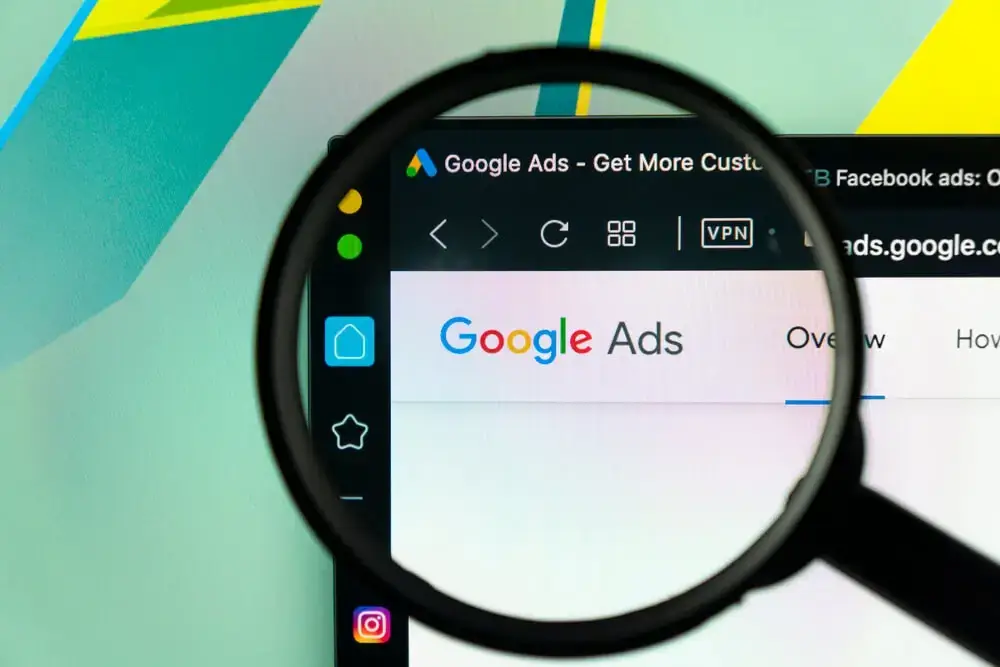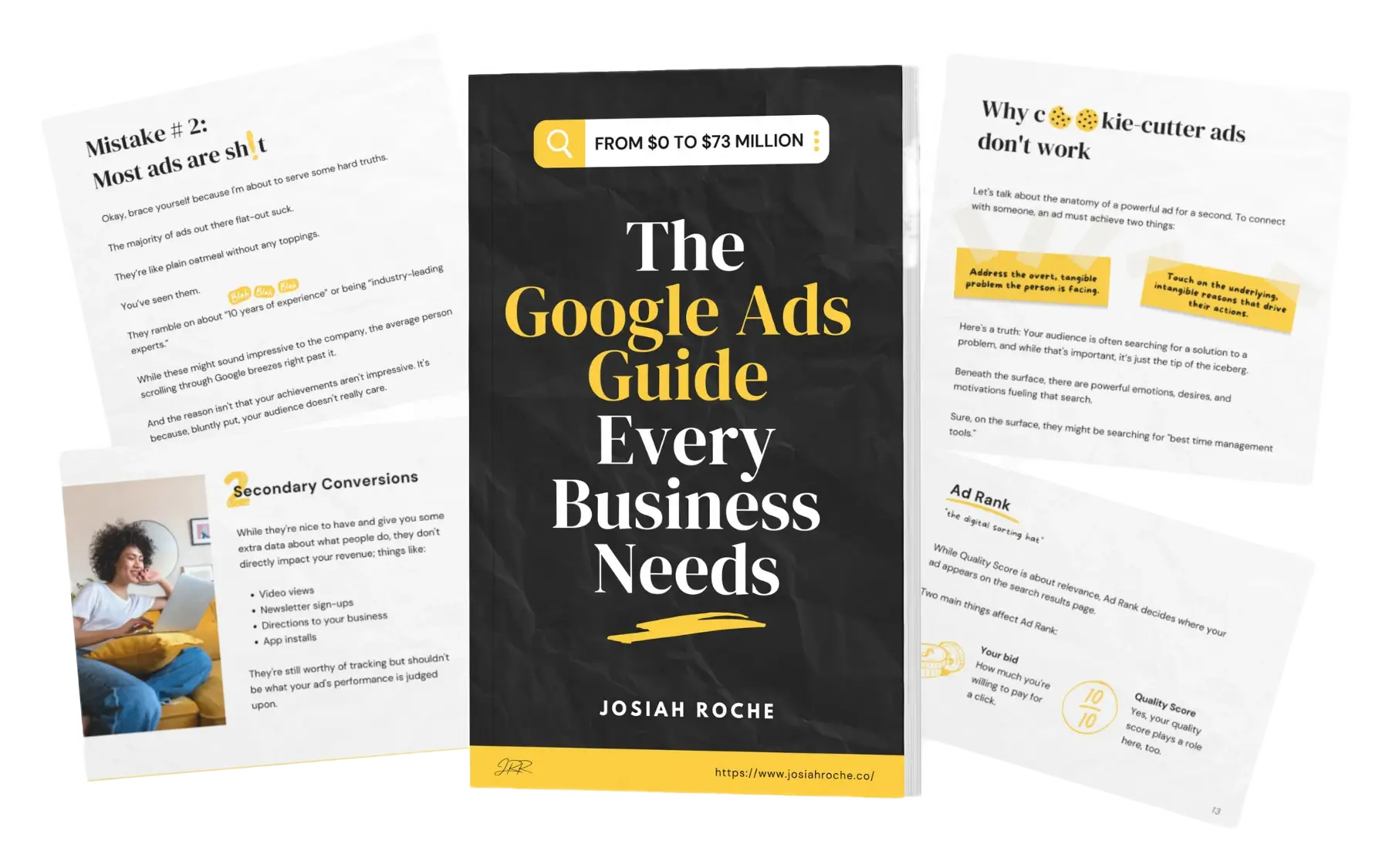It’s annoying, right? You’ve launched your ads, and they’re still not running a few days later.
Almost everyone has come across this at some stage in their media-buying journey. And it can happen for many reasons.
From not updating your billing info to accidentally choosing cannibalising keywords that overlap with your ads.
Google doesn’t give you a heads-up on the reason why either.
In this article, I’ll explore the most common reasons why your Google ads aren’t showing and how to fix them.
1. You’re still in the learning phase
When you launch a new ad, it enters the learning phase. This is when Google needs time to collect data to serve your ad to the right people.
As you know, Google’s mission is to serve relevant and accurate content to search queries.
Across 100s of ad accounts, we’ve seen some campaigns take 7-14 days before they finally began to run.
But in most cases, if you’re running a search ad, you should start to see impressions within 48 hours.
For Performance Max and display ads, it can be a lot longer. Some Performance Max campaigns take up to 2-3 weeks before they go live.
If you’re on a time crunch, there’s nothing you can do to speed up the process.
Even if you spam Google Support or get on the phone with a dedicated manager, the same rules apply to everyone.
If you’ve done everything correctly, it’s just a waiting game from here on out.
2. Your keywords have low search volumes
Another reason your Google ads aren’t showing is that you’re bidding on low-volume keywords (typically long-tail).
If there’s no market demand in your target area for the keywords you want, it’s understandable that they won’t show up for anyone.
To check if the keywords you’re bidding on have low search volume, click on Keywords > Search Keywords to discover which ones are letting you down.
You should notice a “Low search volume” warning next to the keywords.
If you hover over the “low search volume” error, it may give you a reason why:
In most cases, this indicates that:
- Your keywords are irrelevant to your prospect’s searches.
- Keywords are too narrow, too specific, or unclear.
- Keywords are seasonal (for example, advertising surfboards during winter).
- You’ve selected match types that are too restrictive (phrase/exact).
- You’re bidding on branded items or terms.
From here, you have two options. Either you can wait for searches to appear by themselves as you’re still in the learning phase).
Or you can use broader keywords or broader match types for your ads (try broad match if it’s suitable to your strategy).
Instead of waiting for your ads to appear, I recommend trying Google’s Keyword Planner to find more lucrative keyword opportunities with higher search volume.
3. Your bids are too low
It’s possible that your ads aren’t showing because you’re bidding too low.
If your competition is high, your keywords have high cost-per-click (CPC) ranges.
I mean that with every keyword, there is a low bid range and a high bid range. You’ll see this on Google Keyword Planner:
In the example above, if you bid on the keyword “lawyer” in Melbourne (Australia) at $3 per day, you’d likely enter little to no auctions.
There are many reasons for this, but the simplest answer is that you need to have a higher budget in order to secure more clicks.
If a keyword is $40 CPC, and you’re only bidding $5/day, you’d probably expect to wait eight days before you receive a single click. See here how Google uses your budget over a month.
Low bids don’t necessarily mean that your ads aren’t showing either. They probably are, just not on the first search page. Which, to be truthful, is the same as them not being displayed.
Instead, head to the Keywords section in your Google Ads interface and find bid simulators.
Bid Simulators help you predict how different bids impact the performance of your ad.
It will also give you valuable insights into the following:
- How low can you bid without losing a good ad position?
- How much it will cost to improve performance?
- Which keywords require optimisation?
Once you gather all the needed data, simply adjust your bids, so your ad can appear in more auctions.
4. Your CTR is too low
Google goes to great lengths to ensure its content is accurate and relevant to the searcher’s query.
If your ads are not getting clicks, it might be a signal to Google that your content is not relevant to the query.
This happens most commonly because your ad copy is not compelling or relevant enough.
For example, if your ad is showing up for “skateboards”, but your ad copy is related to “bikes”, It doesn’t make sense for anyone to click on that ad.
You must adapt your ads to your target keywords and experiment with different compelling headlines.
Here’s an example:
Notice how they use time-limited offers to create fear of missing out (FOMO)? This may compel some prospects to click on their ad.
But be careful; this doesn’t apply to every niche or business. You need to be strategic with every ad that you create.
5. Your negative keywords are tanking your ads
This is another thing that happens to everyone at least once in their career. You accidentally set up conflicting keywords that tank your account.
In the image above, running shoes are a campaign-level broad match negative keyword.
That means every ad with running shoes in it will be barred from appearing in search results.
But let’s say, for some reason, you want to make the exception for the keyword blue running shoes, and you want it to appear in the search results.
You’d simply replace the broad match negative keyword with the exact match type instead.
You would therefore add [blue running shoes] to your keyword list.
This will allow you to withhold your ads from people searching for running shoes while showing them to everyone who wants to find blue running shoes.
6. Your Quality Score is low
The Quality Score metric provides a good insight into how well your ads perform.
If your keywords have a “rarely shown due to low-quality score” status, it indicates one of three things:
- Low ad quality (due to irrelevant content on your ads).
- Low post-click landing page quality (your landing page is irrelevant).
- It has expected low CTR (because of the landing page plus the ad)
If you feel that you need to improve the Quality Score of your ads, there are several ways to do that.
It’s best to start by reviewing each of the three components that make up the Quality Score: the expected CTR, ad relevance, and the landing page experience
These components will help you understand which parts of your ad require optimisation.
The key point is to ensure you’re giving your audience what they’re looking for. This will help you improve the long-term performance of your ads
It’s also a good idea to use Quality Score with other metrics. Pay attention to your click-through rate, conversion rate, and site engagement and how they relate to the overall QS.
They all affect the performance of your ads and can point out specific areas where you can improve.
For example, you can isolate your best keywords and use Quality Score to determine which ones can perform even better if you optimise your ads and landing page.
On the other hand, a low-Quality Score can reveal weak links in your ad account and help you realise how to set your future on a better course.
7. Your ad group isn’t focused
Every ad group has two inseparable parts: the ad and the keyword. And there’s a good reason for that.
Google can recognise when someone’s search query is connected to your keywords. That’s how it knows when and to whom to show your ad.
The success of your ad depends on how relevant it is to your prospects’ search queries. The higher the relevance, the higher your rank will be.
If your ad groups aren’t structured properly and are not related, that might be why your ads aren’t showing.
The main question is how to make the ad relevant for the search results.
The simple answer would be to structure ad groups out of tightly-knit keywords.
If your ad group consists of keywords that relate to each other, your chances of appearing in the audience’s search results increase exponentially.
Google Ads require patience
Whether you’re a small business owner or an established brand, Google Ads can and will help you grow and achieve your goals.
However, be aware that Google Ads is a waiting game that requires much patience.
You might be wondering, how long does Google Ads take to start?
From my experience as a Google Ads specialist, it takes at least one to three months for your ad campaign to mature.
And another four to twelve months before it grows into a strong campaign that brings consistent results.
During that period, Google will keep running your ads and collecting data, but your ads might not get the clicks and impressions you expect.
It may sound like a lot. But if you consider that businesses make an average of $2 in revenue for every $1 spent, it’s well worth the wait.
Today’s lesson: don’t panic
Seeing that your ads aren’t getting clicks and impressions can be frustrating, if not downright terrifying. It happens to all of us.
But it’s too easy to give yourself to panic and entertain ideas that are neither useful nor productive.
If you are worried about why your Google Ads aren’t showing, remember that there must be a logical explanation for that issue.
All it takes is a little research, patience, and attention to detail, and your Google Ads will undoubtedly have a stellar performance.


